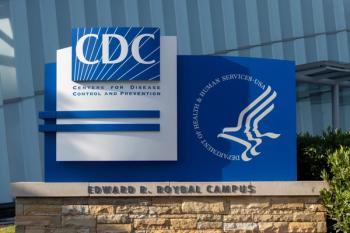
Heart Failure Guidelines Significantly Alter Treatment Options
Cardiac resynchronization therapy eligibility significantly decreased under new guidelines.
Under current guidelines, investigators discovered that a smaller number of patients with heart failure and a left ventrical ejection fraction (LVEG) ≤35% were eligible for cardiac resynchronization therapy (CRT) compared with 2009 guidelines.
For this treatment, a CRT device delivers small electrical impulses to the heart to resynchronize beating, which may improve its ability to pump blood and oxygen.
This analysis is the first to measure the influence of the 2013 American College of Cardiology (ACC) Foundation/American Heart Association (AHA) on eligibility, according to a presentation at the ACC 2017 meeting.
Included in the study were 25,102 patients from 238 hospitals that were included in the Get With the Guidelines-HF database. Of these patients, 33.1% and 49.1% of patients were eligible for CRT under the 2013 and 2009 guidelines, respectively, according to the study.
The study authors said that the new guidelines included NYHA Class 2 patients, which could have increased eligibility. However, the new guidelines significantly limited the inclusion of patients with LVEF ≤35%, sinus rhythm, and a left bundle branch block (LBBB) or non-LBB and a QRS ≥ 150 millisecond (msec).
QRS duration and morphology were the only substantial differences in characteristics of eligible patients based on the guidelines.
In both groups, patients were typically age 73, mostly men, and white. Patients’ LVEF was 23%, and 43% had atrial fibrillation. Additionally, 78% had
Among the 5303 patients with a QRS duration of 120 to 149 msec, only 21.3% were eligible, compared with 78.7% who were eligible under the 2009 criteria, according to the study. For a QRS of ≥ 150 msec, almost all patients were eligible under the 2013 and 2009 guidelines.
The authors also found that nearly all patients with a LBBB were eligible under both. Non-LBBB eligibility was limited to 56.8% under the new criteria, while nearly all were eligible under the 2009 criteria.
Interestingly, the authors discovered low adherence to the CRT for both sets of recommendations. Only 57.8% and 54.9% of eligible patients based on the 2013 and 2009 guidelines, respectively, had a CRT prescribed or placed at hospital discharge, according to the study.
While the new guidelines have the potential to reduce healthcare costs due to limited eligibility, improvement is needed in adherence to therapy for patients with heart failure, the study concluded.
Newsletter
Stay informed on drug updates, treatment guidelines, and pharmacy practice trends—subscribe to Pharmacy Times for weekly clinical insights.




















































































































































































































